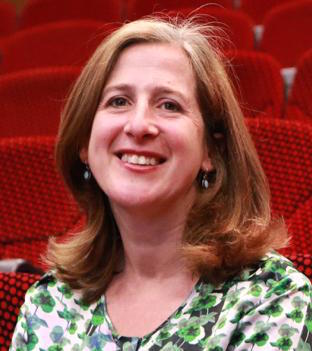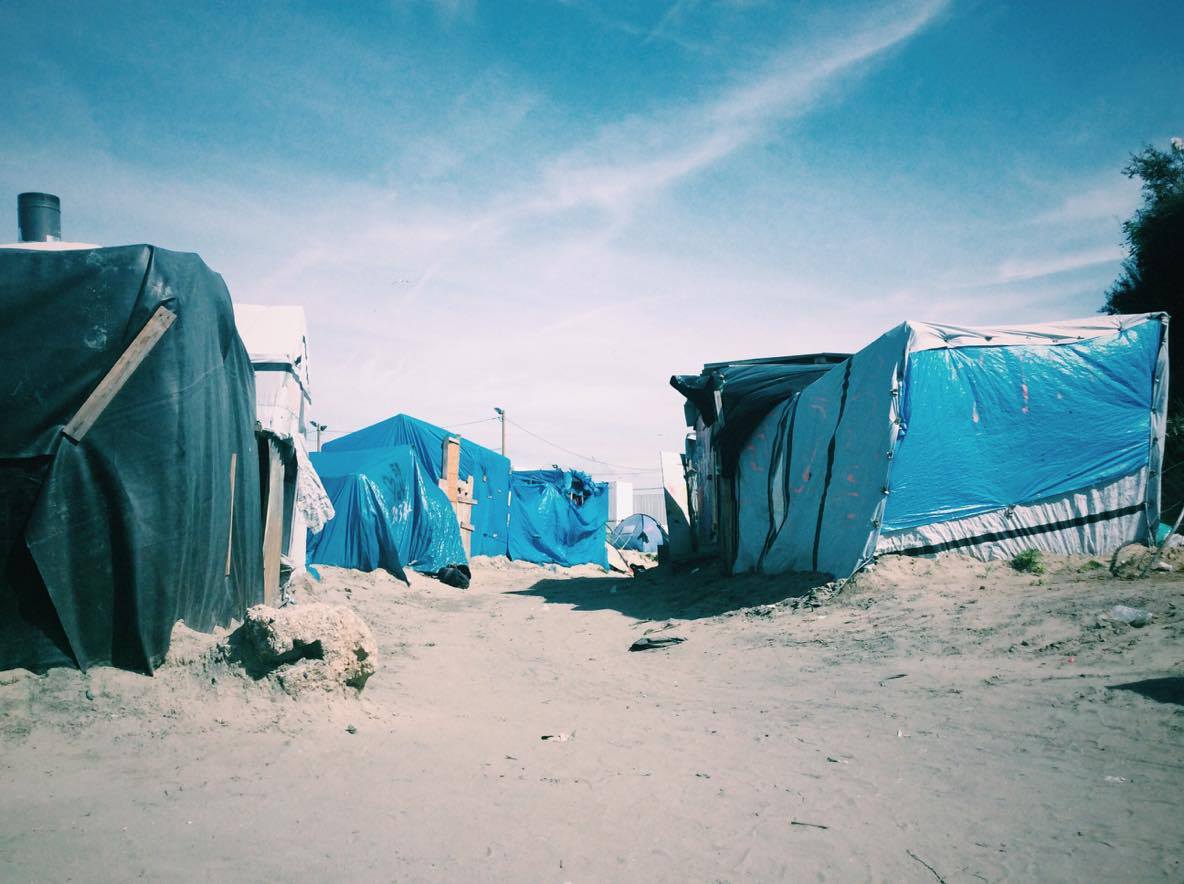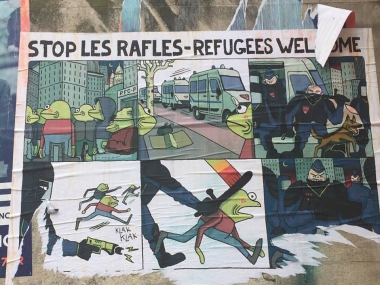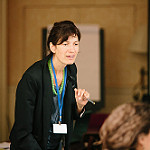Within URBACT, not all cities are directly concerned with the refugee crisis, but their urban policies are and might be more confronted with questions of reception and integration on short and long term over the coming years. Progressive citizens and city administrations are organising themselves in different ways, experimenting, innovating and reinventing past approaches for ensuring safe response to immediate needs while enabling environments for social integration. “We were not very prepared as a city… but the good thing that came out of this was a very spontaneous cooperation between the city government, civil society, established social organizations, and new organizations that started in a second.” Arnd Boekhoff, founder of Hanseatic Help e.V.
This approach of seeing cities (with its plural identities of citizens initiatives, independent and faith-based groups, NGOs, local governments etc), as problem solver of the crisis is getting more relevance than ever in the past. City based actions are shared internationally and new solidarity based liaisons created as for instance the
solidarity cities initiatives supported by
EUROCITIES.
Beyond the official initiatives of management for the refugee crisis, the voice of grassroots organisations can give important lessons from the ground. Over the past year, there has been a tremendous groundswell of innovation in response to the refugee crisis. Consider the recent
MIT Arab Competition,”Innovate for Refugees,” where over 1600 teams submitted their tech-based ideas. Meanwhile, grassroots approaches from moveable shelters to job placement to street kitchens have also emerged in this historically unprecedented humanitarian response.

Years ago, during my PhD, I had the chance to meet
Natasha Freidus, an excellent MIT scholar and activist at the Center for Reflective and Community Practice which worked on community organising using narrative and video making. Our work at MIT was to enhance, advocate, and support grassroots organisations to voice their concerns through media and tech about their urban living environment. Tasha is now a resident in France, and the Founder of
NeedsList, a platform providing an alternative model for refugee aid and Co-Founder of
Prosper Community, a consortium developing an open database of migrant-related initiatives.
Her wide-ranging knowledge on activism, ICT and urban development is an asset for many and I have asked her to contribute to URBACT telling her experience. In the following, Tasha writes her view on lessons from grassroots response to the refugee crisis in Europe to consider good practices for URBACT cities. She explores how to foster a climate for innovation, grounded in real people’s needs and streamlined approaches.
Lesson One: Do your due diligence
Innovate. Collaborate. Replicate. These buzzwords have saturated the tech response to the refugee crisis over the past nine months. And yet, there’s another word that is increasingly “buzzing”: Duplicate.
Consider the case of Berlin, where there are a minimum of eight mobile apps designed to help newcomers navigate the city. Meanwhile, in other major European cities, designers are developing similar apps from scratch.
While it is thrilling and inspiring to see this level of goodwill, the reality is that without strategic alliances, these initiatives end up competing for funding and users.
At Prosper Community, we took a step back from innovation to do the painstaking work of centralizing efforts in one open database. Consider resources like
Code for Europe, and if they aren’t comprehensive enough, considering creating your own database of solutions.
So before you start innovating for sustainable urban growth, learn from those who have tried and succeeded, but also those who have tried and failed. For more information on the role of open data in driving urban solutions, please read Urbact blog, Data Driven Cities.
Lesson Two. Putting people first
Participatory processes are not new to urban design - we know that cities thrive when citizens have opportunities to have a say in the decisions that affect them. Yet sometimes when it comes to tech, we leave it to the coder; often it’s too easy to forget that people are always on the other side.
Transport challenges for refugees arriving in Europe, for example, pose a considerable challenge. There are literally hundreds of apps that have been developed to address this phenomenon, to help refugees find safe routes, resources, and information. Yet few of these have been developed with any end-user involvement. Understandably so, refugees in transit are not going to stop and beta your app. Yet, developers can reach out to partners on the ground.
More and more we’re viewing great examples of collaboration including hackathons bringing together coders, refugees, and aid workers to collectively iterate solutions. At a recent event in Paris, we tested an early prototype of NeedsList, an aid coordination software, with a group of direct aid providers and NGO’s. User-centered design does take longer, but along the way you have the advantage of developing the key relationships and networks that will ultimately make your solution click.
Lesson 3. Understand the complexity of the problem
Like urban development, migration is multifaceted and complicated by factors of geopolitics, behavioral psychology, and economics. In designing solutions, we must pay adequate attention to to the root causes of the issue and the barriers to entry.
In the case of the hundreds of housing solutions that have been proposed over the past year for the refugee crisis, for example, we must ask why the shelter is needed.

Is the proposed shelter for registered refugees in official camps? Is it for asylum seekers who have not yet received their refugee status, awaiting their refugee status in cities? Take the example of
CALM (Comme a la maison) a highly touted program developed by
SINGA in France to match people with available space to refugees in need. In the autumn of 2015, thousands of individuals across France offered their homes through the CALM platform. What users, and perhaps the platform developers, did not understand was that the CALM database was only available to individuals who had already received their refugee status. Meanwhile, large numbers of asylum seekers and new arrivals were sleeping rough in Paris and other major cities. People who had offered space were frustrated, not understanding why the system wasn’t proposing matches. SINGA recently re-released CALM with clear language defining who was eligible for the platform. However, the reality is that once individuals have legal refugee status, they are eligible for a host of services including access to state-housing. Meanwhile, thousands of migrants in France continue without shelter following the dismantlement of Calais and evacuation of the camps in Paris.
In order to design appropriate responses to major problems in urban areas, we need to make sure we are using solid research to better understand the nature of the problems. Furthermore, we can do our best to understand why specific solutions have not been proposed earlier, and/or why they have not come to fruition.
Lesson Four. Open sourcing our solutions
What if we started thinking more broadly in terms of “open sourcing” our solutions. Too often we think of open source as just code - but as anyone who has tried to release an app knows, deployment and engagement are often the biggest barriers to entry.
As Europe welcomes migrants in waves, we can turn East to earn from the first points of entry and resettlement to learn. Aid delivery, for example, is one of the most challenging problems in hot spots. In Greece,
Marha Car is one of the few strategies that has emerged — they have a volunteer team of dispatch coordinators working remotely from around the world, to direct drivers to where aid is needed in real time. It’s not the tech here that is innovative, in fact, dispatchers are using Whatsapp groups to communicate. Rather, it’s the coordination and focus on thinking creatively about the application of existing tools to new contexts.
It’s about time that we started applying crowdsourcing approaches to the social sector. Our partners over at
ImpactOn and
Switxboard are both focused on developing databases of solutions to social issues including migration and urban development. What if there was a github equivalent of solutions, coordination, and deployment strategies where innovators could search, fork, and develop? As ImpactOn’s Manifesto reads, “... making these projects accessible would mean to provide effective, proven models that people could take and adapt to their conditions, anywhere in the world.”
Lesson Five. Simple is the new smart
I spoke a few weeks ago with a former classmate who spent a few years working on
Sintropher, an EU initiative aimed at connecting European regions using smart transport. One key finding was that it was an uphill battle to get funding, given the high cost of investment and low demand from constituents. She told me, “We need solutions that are not expensive, easy to implement, and easy to administer.”
We are finding similar trends with successful refugee-related tech. Refugees, while tremendously innovative, tend to stick to messaging and tried and true apps while NGO staff are not known for being early adopters.
At NeedsList, we are also doing our best to create a simple way to crowdsource needs so that donors and volunteers can contribute directly to efforts in the field. For example, let’s look back to transport. Instead of coming up with a complex way for a migrant to get from Point A to Point B, what if a donor could just purchase a pack of bus tickets for refugees online? This type of platform leverages existing infrastructure, bypasses the traditional aid system and providing direct connections between the people who want to help and the people who need help. Again, it’s not the tech that’s innovative here - it’s the application of existing technology and a sharing economy approach to create social impact.
In a recent report about the response in Lesbos, the
International Rescue Committee suggests the need for cross-sector collaboration and out of the box thinking in addressing new arrivals to urban areas. “Humanitarian actors responding to urban crises must strive to achieve effective coordination, which includes local authorities, local non-governmental organisations (NGOs), communities, and volunteer groups.”
We are at a point in history where solutions for almost any imaginable problem are out there. The trick, now, is in identifying, adapting, streamlining, and deploying them. All while finding the right people to help make them happen. The good news? If you are working in an urban area, that person may just be a few blocks away. So close that laptop, go grab a coffee with your officemates, and figure out what solutions are around the corner.
Tasha Freidus and Laura Colini
Many thanks to my friend Tasha for her insightful contribution.
Additional Resources:

 Years ago, during my PhD, I had the chance to meet Natasha Freidus, an excellent MIT scholar and activist at the Center for Reflective and Community Practice which worked on community organising using narrative and video making. Our work at MIT was to enhance, advocate, and support grassroots organisations to voice their concerns through media and tech about their urban living environment. Tasha is now a resident in France, and the Founder of NeedsList, a platform providing an alternative model for refugee aid and Co-Founder of Prosper Community, a consortium developing an open database of migrant-related initiatives.
Years ago, during my PhD, I had the chance to meet Natasha Freidus, an excellent MIT scholar and activist at the Center for Reflective and Community Practice which worked on community organising using narrative and video making. Our work at MIT was to enhance, advocate, and support grassroots organisations to voice their concerns through media and tech about their urban living environment. Tasha is now a resident in France, and the Founder of NeedsList, a platform providing an alternative model for refugee aid and Co-Founder of Prosper Community, a consortium developing an open database of migrant-related initiatives. Is the proposed shelter for registered refugees in official camps? Is it for asylum seekers who have not yet received their refugee status, awaiting their refugee status in cities? Take the example of CALM (Comme a la maison) a highly touted program developed by SINGA in France to match people with available space to refugees in need. In the autumn of 2015, thousands of individuals across France offered their homes through the CALM platform. What users, and perhaps the platform developers, did not understand was that the CALM database was only available to individuals who had already received their refugee status. Meanwhile, large numbers of asylum seekers and new arrivals were sleeping rough in Paris and other major cities. People who had offered space were frustrated, not understanding why the system wasn’t proposing matches. SINGA recently re-released CALM with clear language defining who was eligible for the platform. However, the reality is that once individuals have legal refugee status, they are eligible for a host of services including access to state-housing. Meanwhile, thousands of migrants in France continue without shelter following the dismantlement of Calais and evacuation of the camps in Paris.
Is the proposed shelter for registered refugees in official camps? Is it for asylum seekers who have not yet received their refugee status, awaiting their refugee status in cities? Take the example of CALM (Comme a la maison) a highly touted program developed by SINGA in France to match people with available space to refugees in need. In the autumn of 2015, thousands of individuals across France offered their homes through the CALM platform. What users, and perhaps the platform developers, did not understand was that the CALM database was only available to individuals who had already received their refugee status. Meanwhile, large numbers of asylum seekers and new arrivals were sleeping rough in Paris and other major cities. People who had offered space were frustrated, not understanding why the system wasn’t proposing matches. SINGA recently re-released CALM with clear language defining who was eligible for the platform. However, the reality is that once individuals have legal refugee status, they are eligible for a host of services including access to state-housing. Meanwhile, thousands of migrants in France continue without shelter following the dismantlement of Calais and evacuation of the camps in Paris.  Submitted by Laura Colini on
Submitted by Laura Colini on 



